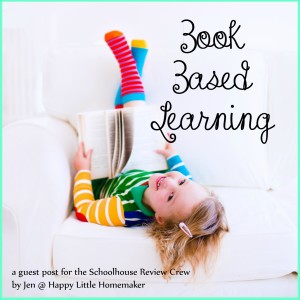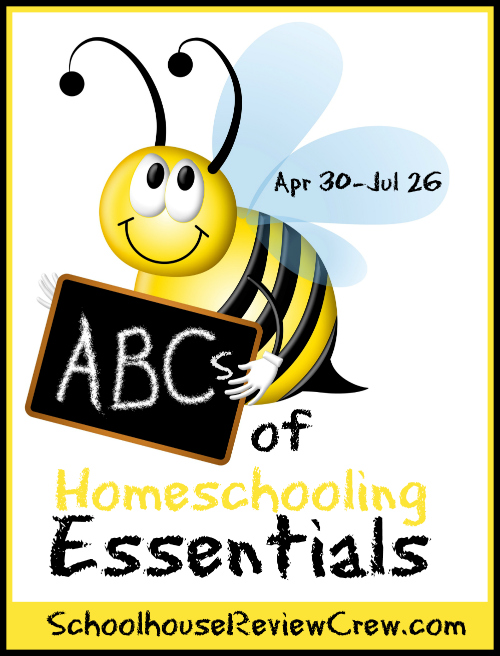I am a book lover. I love the feel of the pages, the smell of the glue and the feeling of anticipation that comes with a new book to read. I apparently have a ton of books because people come over and comment on it. We only have 4 shelves. In the living room :).
You would think with all these books that I would be a huge advocate of book-based learning. And I am! But I wasn’t always. And I’ve found that all books are not created equal.
Living Books
Anyone who has homeschooled has probably heard of living books and/or Charlotte Mason. But what ARE “living” books? Living books are books written in a narrative style by someone who is so interested in the topic that they are able to pull you in so deeply that you remember facts without having to work at it. DK Eyewitness or Usborne books do not qualify. Charlotte Mason said:
Therefore, the selection of their first lesson-books is a matter of grave importance, because it rests with these to give children the idea that knowledge is supremely attractive and that reading is delightful. Once the habit of reading his lesson-book with delight is set up in a child, his education is–not completed, but–ensured; he will go on for himself in spite of the obstructions which school too commonly throws in his way.
(Vol. 1 Part VIII–Reading for Older Children, p.229)
I have collected and later purged much twaddle or junk books (think Strawberry Shortcake, or Disney Princess off-shoot stories). Living books are books that *I* enjoy reading. That the kids enjoy listening to. We are fortunate to have the largest library of living books in our city–the Children’s Preservation Library. They have over 20,000 books from the golden age of children’s literature — 1930-1970.
Why Use Book Based Learning
Books written in the golden age of children’s literature cover every topic imaginable that not only teach and entertain but support Judeo-Christian values. Character! Thinking! God! Oh my :).
Besides the aspect of books that respect our values, I’ve found that reading good literature together helps build family relationships. We all snuggle on the couch and read together. It could be history or science or a biography of a composer. It’s not directed at a particular grade and we can all talk together.
Plus, living books can be inexpensive! My favorite sources for living books are:
- Amazon. Since many of them are out of copyright, you can get the Kindle version for free.
- Heritage History. These folks sell CD’s of living history books for all periods of history. You get dozens of books for a very affordable price.
Book Lists
Another thing I do as a book nut is collect lists of books. In fact, I have a folder of just book lists in Evernote. You can check Pinterest for books related to the topic you are looking for.
These are also great places to find lists of quality books:
- Sonlight
- Ambleside Online
- Heritage History
- Illuminations
- Tapestry of Grace
- Veritas Press
- Institute for Excellence in Writing (Timeline of Classics and Reading Roadmaps)
These are just a few places to find good books to use in your home or school.
Book Based Exploration
While reading great books is well, great, diving deep into those books can be even better. There are many ways to get started in taking good books further with various curriculum, note booking and “Lapbooks.”
Some favorite sources include:
Using book-based learning is the best tool I have used to homeschool my kids with as little overlap as possible. It works perfectly with my natural bookworm tendencies and my kids have become accustomed to spending hours in or near me while we read. Extending this to our “school” makes it much easier to fit in all the subjects without spending hours at a desk or indoors. Plus, it’s super easy to put books on a kindle or phone and easily do some “school” on the road. Or at the doctor’s office. Or wherever you find yourself with extra time and not much to do.
Do you have a favorite book-based learning resource you would like to share? Leave a comment!
Jen is a Catholic wife and mother to three little ones whose nose can usually be found buried in a book, learning once all the work is done. Or sometimes, even when it’s not! You can always find Jen blogging about the big 5 — God & Catholicism, taking care of yourself, serving your spouse and children and all the other work women typically do at home. She can be found blogging at Happy Little Homemaker.


I love living books, too! Since you live near Michelle’s library, you’re probably not collecting books as much, but I love Jan Bloom’s books, “Who Then Shall We Read?” Volumes 1 & 2. She has compiled lists of authors, with brief biographies, and their bibliographies. I try to carry them with me when I’m boom shopping, even just at the local Good Will, because you just never know what you’ll find. They are sized to fit pretty easily into a purse, and I use them all the time. If I find the author listed in those books, I snag it. I am still working on a good way of knowing what I have so I don’t end up with so many duplicates.
Another list I like is the 1000 Good Books List from the Classical Christian Education support loop: http://www.classical-homeschooling.org/celoop/1000.html
Yesterday’s Classics also republishes children’s books in the public domain, and they have their ebook bundles on sale throughout the year. I am not sure they are doing as much paper printing of the books now, but their ebook collections are fantastic. Lisa Ripperton, the owner, also does Gateway to The Classics, which is a phenomenal resource. It’s a subscription site and she has excellent organizational tools so you can plan a course for your child. There are even audio files for songs and poems.
Thanks for a great post! I envy your proximity to the CPL. I’m working toward starting my own library of living books someday.